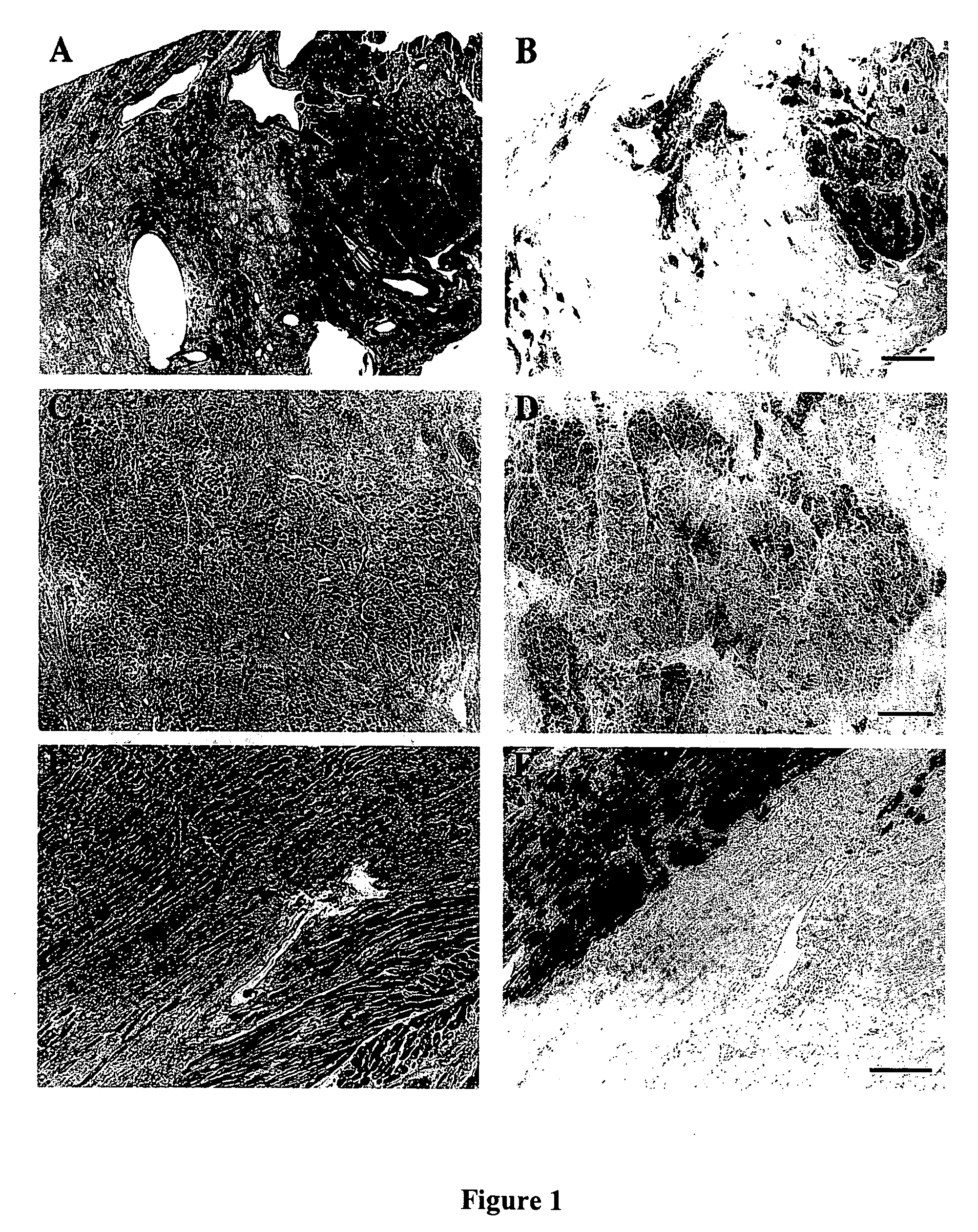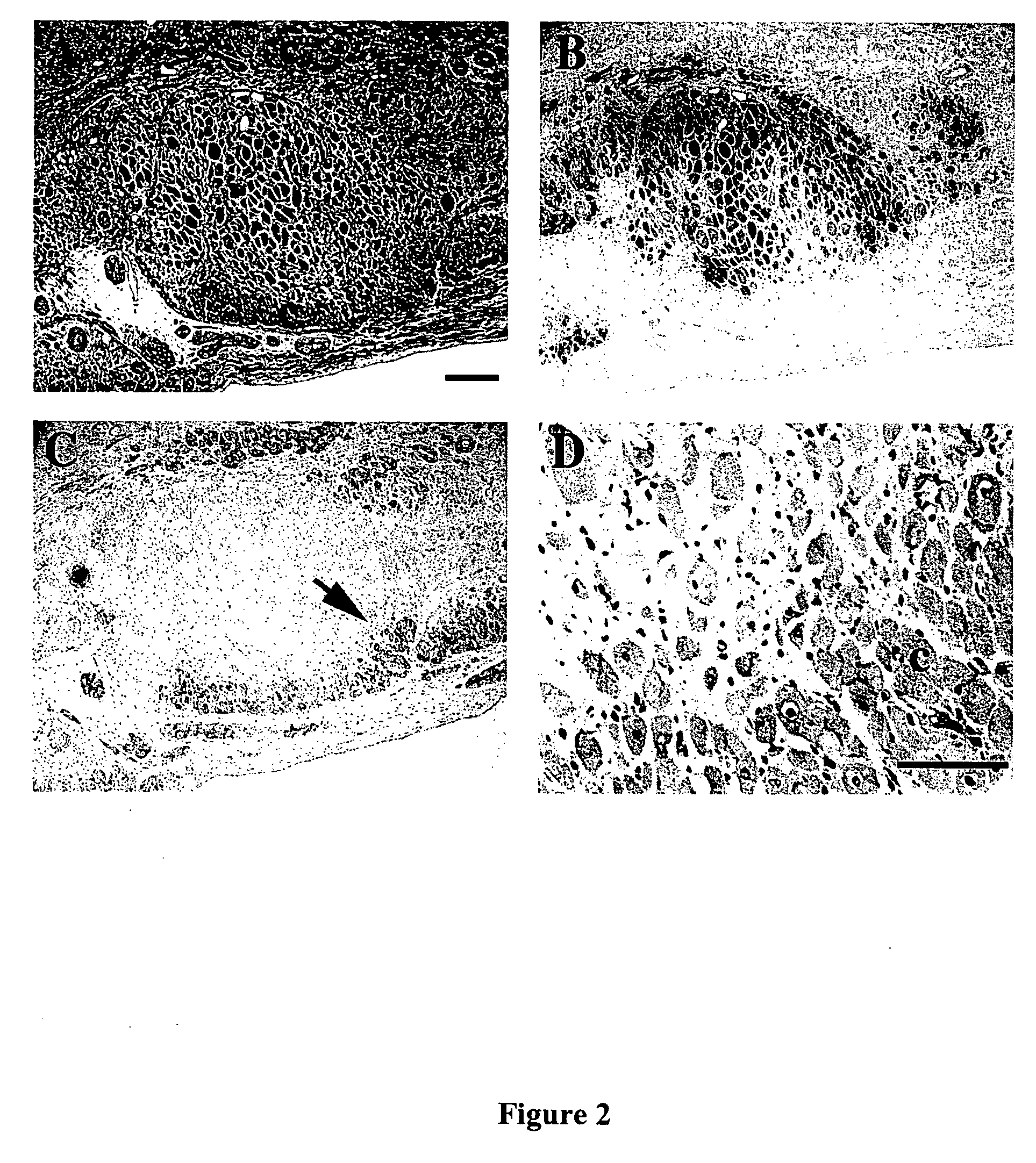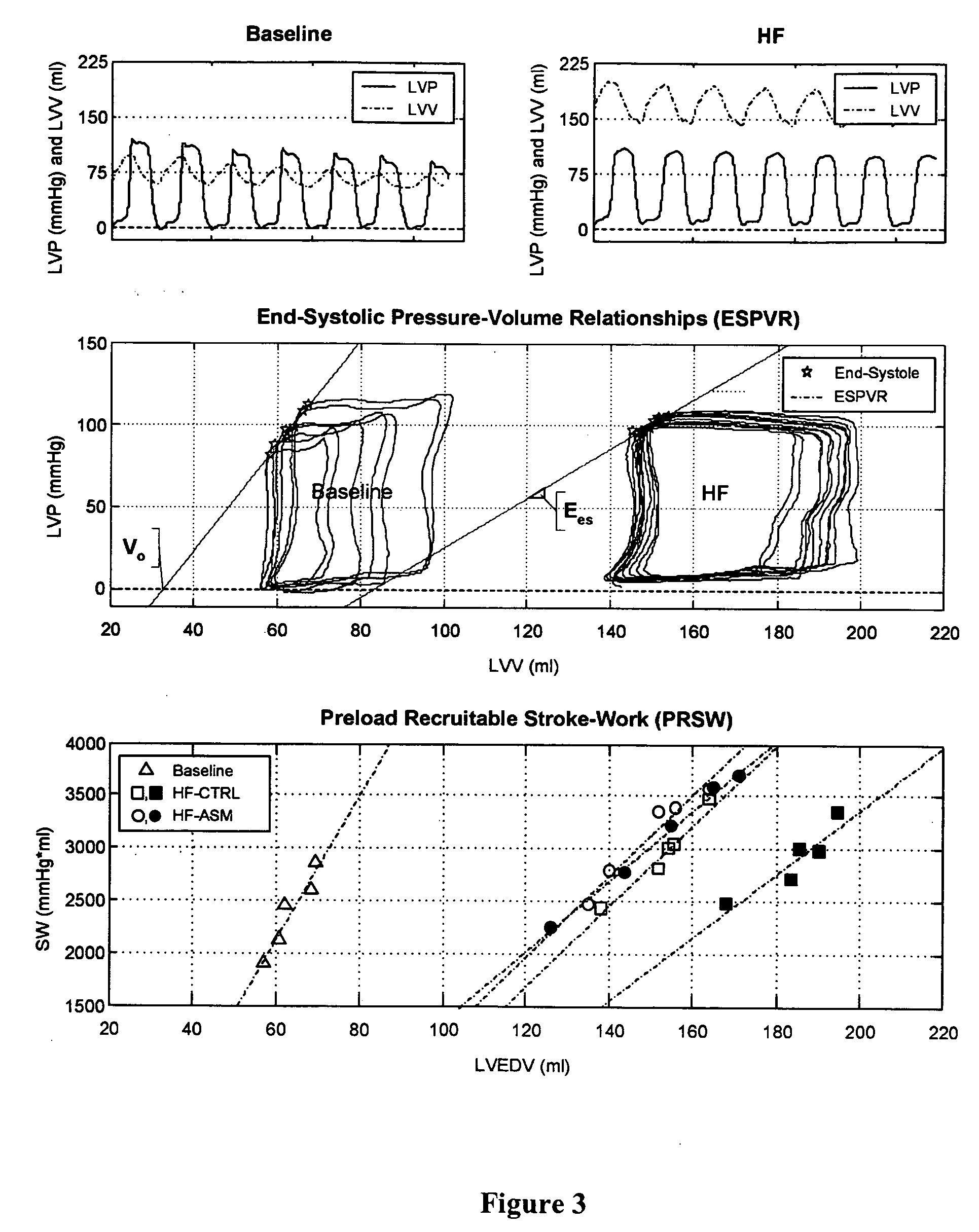Catheter-based delivery of Skeletal Myoblasts to the Myocardium of Damaged Hearts
a technology of skeletal muscle and myoblasts, which is applied in the direction of skeletal/connective tissue cells, drug compositions, biocide, etc., can solve the problems of organ or tissue replacement remains the only other possible option, irreversible cardiac cell loss, and substantial disability and productivity loss, so as to avoid tissue rejection problems and minimize invasive
- Summary
- Abstract
- Description
- Claims
- Application Information
AI Technical Summary
Benefits of technology
Problems solved by technology
Method used
Image
Examples
example 1
Correlation of Autologous Skeletal Survival with Changes in Left Remodeling in Dilated Ischemic Heart Failure
Goals of the Study
[0114] Autologous skeletal myoblast (ASM) transplantation, or cardiomyoplasty, has been shown in multiple experimental studies to improve cardiac function after myocardial infarction (R. C. J. Chiu et al., Ann. Thorac. Surg., 1995, 60: 12-18; R. K. Li et al., Ann. Thorac. Surg., 1996, 62: 654-661; C. E. Murry et al., J. Clin. Invest., 1996, 08: 2512-2523; M. Scorsin et al., J. Thorac. Cardiovasc. Surg., 2000, 119: 1169-1175; K. Tambara et al., Circulation, 2003, 108 (suppl. II): 259-263; D. A Taylor et al., Nature Med., 1998, 4: 929-933; M. Jain et al., Circulation, 2000, 103: 1920-1927). Though the majority of studies have been performed in small animal models of myocardial injury, there is evidence of similar improvement in larger animal models (S. Ghostine et al., Circulation, 2002, 106(suppl. I): 131-136) and in the first patient trials (P. Menashé et...
example 2
Correlation of Autologous Skeletal Survival with Changes in Left Remodeling in Dilated Ischemic Heart Failure: Contribution of the Remote vs the Transplanted Myocardium
[0153] Introduction. Autologous skeletal myoblast (ASM) injection after myocardial infarction has been shown to improve left ventricular (LV) performance. However, the mechanism(s) behind such improvement remain(s) unclear.
[0154] Methods. Ischemic heart failure (iHF) was induced in sheep (N=12) by selective microembolizations (circumflex artery). After iHF (LVEF: 33±2.2%; LVESV: 143±18 mL), animals were instrumented with sonomicrometers to assess global and segmental LV function. The infarcted myocardium (INF) was injected with either 5×108 cells (ASM; N=6) or cell media (CM; N=6). Pressure volume analyses, hemodynamics and LV segment function (both INF and remote / anterior myocardium [RMT]), were evaluated weekly in unsedated animals for 10 weeks. Comparisons were made by 2-way ANOVA.
[0155] Results. ASM-derived myo...
example 3
Safety and Feasibility of Percutaneous Autologous Skeletal Myoblast Transplantation in the Coil-Infarcted Swine Myocardium
[0157] All experiments were conducted according to guidelines published in the “Guide for the Care and Use of Laboratory Animals” (DHHS publication number NIH 85-23, revised 1985) and Subchapter A of the Federal Animal Welfare Act written by the United States Department of Agriculture and in the spirit of FDA Good Lab Practices. The study protocol was approved by the Harrington Animal Care and Use Committee at Arizona Heart Hospital, Phoenix, Ariz., prior to the start of the study. A summary of the study design is shown in Table 3.
Materials and Methods
[0158] Animal Preparation. Ten (10) female Yorkshire swine between the ages of 3 and 6 months and weighing 91±25 lbs, underwent induced myocardial infarction. Three (3) died during or shortly after induction of the myocardial infarction. One (1) animal was used to evaluate short term retention and biodistributio...
PUM
 Login to View More
Login to View More Abstract
Description
Claims
Application Information
 Login to View More
Login to View More - R&D
- Intellectual Property
- Life Sciences
- Materials
- Tech Scout
- Unparalleled Data Quality
- Higher Quality Content
- 60% Fewer Hallucinations
Browse by: Latest US Patents, China's latest patents, Technical Efficacy Thesaurus, Application Domain, Technology Topic, Popular Technical Reports.
© 2025 PatSnap. All rights reserved.Legal|Privacy policy|Modern Slavery Act Transparency Statement|Sitemap|About US| Contact US: help@patsnap.com



